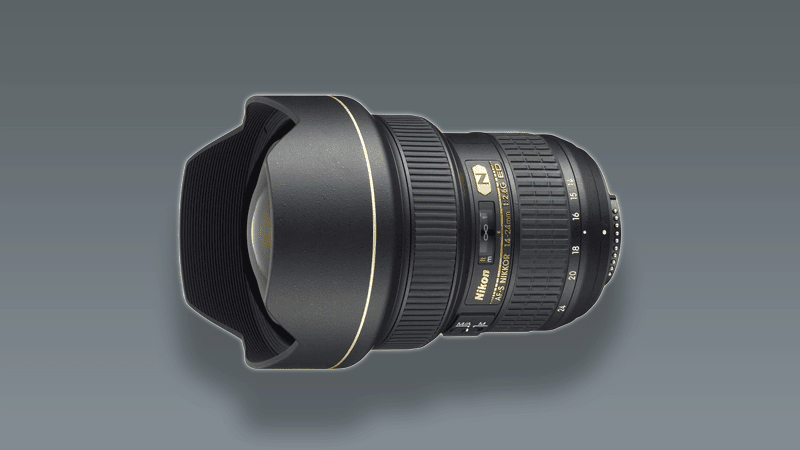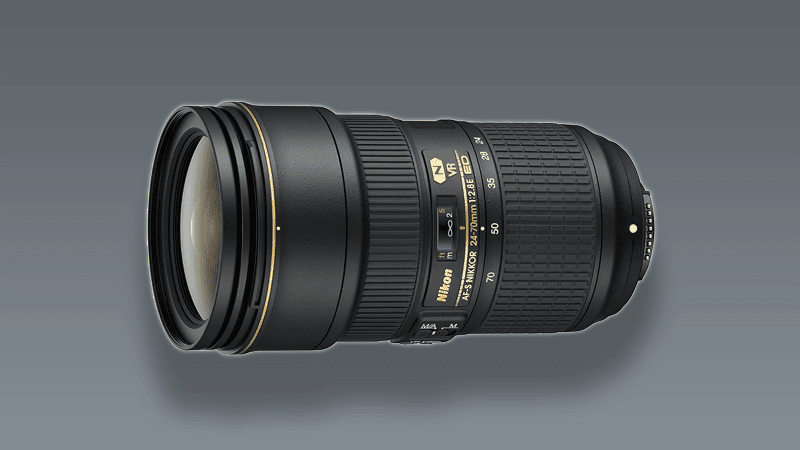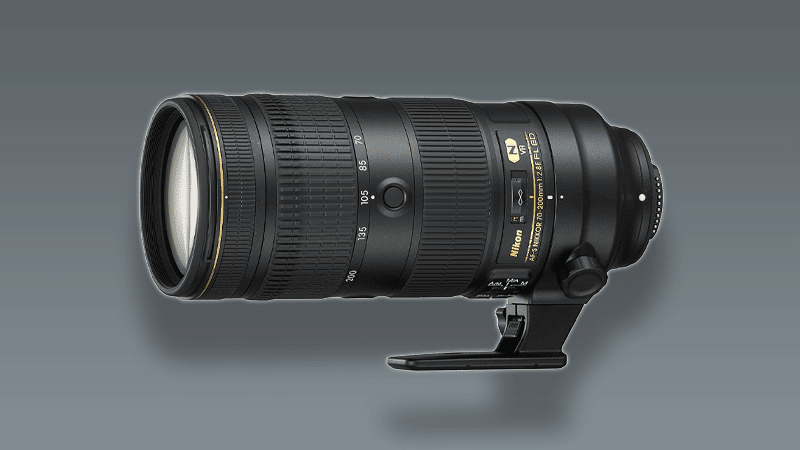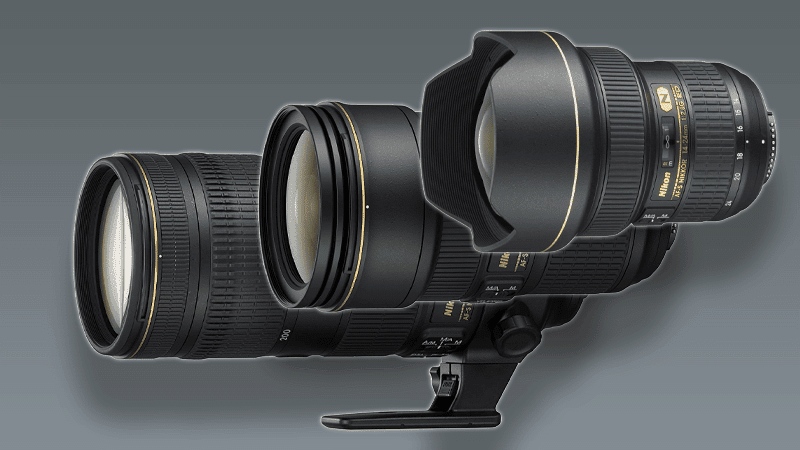Photographers have more options than ever when it comes to picking lenses for their Nikon cameras, but which lenses should you pick?
The Nikon trinity lenses cover the most commonly used focal lengths and give photographers the most options when it comes to their shooting style. The Nikon AF-S NIKKOR 24-70mm f/2.8E ED VR lens is easily the best first lens to get out of the three, but the others offer important features that many photographers will find useful for their creativity.
Whether you’re new to photography or looking to go pro, the Nikon Holy Trinity lenses are the best place to start.
What is the Holy Trinity of Lenses?
Let’s start off by answering: “What is the Holy Trinity of Nikon lenses?”
In photography, each lens has its own focal length. This is essentially how wide or how tight your photograph is going to be. Wide-angle lenses are great for styles like landscape photography while tighter telephoto lenses are often used for sports and wildlife.
Covering all the different options for focal-length lenses can require buying a lot of specialized equipment. That’s why photographers typically go for the Holy Trinity of lenses. These cover all of the most commonly used focal lengths and prepare photographers for a wide range of shooting situations.
The Holy Trinity typically covers the ultra-wide-angle down 14 to 16 mm all the way up to telephoto focal lengths at 200 mm.
There’s some debate as to which lenses get to count as the Holy Trinity of lenses for any given camera. However, we’re sticking with the most commonly picked options which are all zoom lenses.
Typically, the trinity only refers to the most cutting-edge line of lenses a brand has available. We’ll be focussing on the trinity for Nikon fx lenses, but you can also find the same Holy Trinity of Nikon Z-mount lenses or for the DX-crop sensor lenses.
Nikon AF-S NIKKOR 14-24mm f/2.8G ED Lens

Wide Angle Excellence in the Nikon Holy Trinity Lenses
Bottom Line:
The Nikon AF-S NIKKOR 14-24mm f/2.8G ED lens is Nikon’s single best option for wide-angle photography on their full-frame DSLR cameras. This lens will have you covered for everything that could come your way from ultra-wide to capturing landscapes.
Pros
- Silent Wave Motor AF System
- Built-In Petal-Style Lens Hood
- Rounded 9-Blade Diaphragm
- 5 Optical Elements
- Internal Focus
Cons
- Other companies go up to 35mm with their wide-angle lenses giving them much more versatility
Why We Picked It
As a photographer, you need to get wide-angle coverage. This is great for landscape photography, but it’s also vital for working photographers in a variety of styles.
Wide-angle photography is a great choice for events, weddings, and even for some really creative portraits. Even if you don’t normally shoot wide-angle photographs, it’s great to have the potential to take wide-angle pictures by your side when you need it.
This lens gives you exactly what you’re looking for when it comes to taking wide-angle pictures. It’s got multiple optical coatings that allow you to get crisp and clear images without a lot of distortion. It also has an internal focus which simplifies getting the shot that you’re looking for in a more streamlined package.
The built-in lens hood is also great to see in this lens. You don’t have to worry about finding an aftermarket lens hood and balancing taking it on and off in between shots.
We also love the Silent Wave motor auto-focus system. A noisy auto-focus system can detract from getting the shot that you need and can even be a distraction when shooting events and weddings.
This is the wide-angle lens that photographers taking pictures on Nikon DSLR lenses have been looking for.
Who It’s For
We’re going to start off with the people who need this lens the most and then cover photographers who would benefit greatly from his lands, but it might not be the first pick for them.
This lens is going to be mostly for photographers who are shooting wide-angle photographs. This covers a variety of popular styles but is especially for landscape photography. You need to have a powerful wide-angle lens with a few focal-length options in order to get the landscape shots you’re looking for.
This lens is also great for photographers who like interior and design photography. This could even be for real estate agents who are looking to make sure that their clients can get great pictures of the inside of homes that they’re looking to sell.
Everyday photographers can also benefit from throwing this lens in their photography bag. Being able to quickly switch out your go-to lens for a wide-angle lens means that you can give a wider variety of unique shots while traveling.
Even if you’re just taking pictures of a family gathering or holiday, having this lens in your bag means having more options without having to carry dozens of different prime lenses with you.
Nikon AF-S NIKKOR 24-70mm f/2.8E ED VR Lens

The Everyday Photographer’s Pick of the Nikon Trinity of Lenses
Bottom Line:
The Nikon AF-S NIKKOR 24-70mm f/2.8E ED VR lens is going to be the go-to lens for almost every photographer. It’s wide enough to handle landscapes while offering you some basic options for portraits and telephoto photography.
Pros
- Weather sealed
- 4 optical elements
- Multiple coatings
- Fluorine coated elements
- 9-bladed diaphragm
- Silent Wave Motor AF System
Cons
- There are better options out there for portraits
Why We Picked It
We picked the Nikon AF-S NIKKOR 24-70mm f/2.8E ED VR lens because this is the go-to lens for virtually every photographer. Whether you’re starting off as a beginner or student, or a working professional, this is the one lens you need to have in your photography bag.
This lens is a jack-of-all-trades. You’re able to dabble in everything from landscapes and wide-angle work to portraits and some entry-level options for telephoto styles. This might not be the best lens for things like sports and wildlife, but you can definitely get away with starting off your photography in those styles by using this lens.
We know plenty of professional photographers who rely on this lens for the vast majority of their shooting. This is the go-to choice for wedding photographers, event photographers, and even street photographers who are looking for more versatility than a prime can offer.
If you’re looking for a single lens kit, this is the piece of glass that you need. Why bother hauling around three or four lenses when you can just take this lens with you? This is especially useful for people who are traveling a lot and who simply don’t have room for multiple lenses.
The only drawback to this lens is that it doesn’t offer a lot of wide-angle or a lot of telephoto options. If you know that your dominant photography styles use a lot of telephoto or wide-angle, you will need other lenses than this.
Who It’s For
It’s almost hard to say who this lens is for because it’s for almost every photographer.
Beginner photographers and students are going to love this lens. It lets you explore a lot of the most popular photography styles without having to make the kind of commitment you would need when buying a prime lens. These lenses are also very affordable and make a great choice for people who want to get the most out of their photography kit dollars.
However, don’t let that trick you into thinking that this is some kind of toy lens. This is also the perfect choice for a working photographer who wants a reliable, workhorse lens. If you’re looking to work as a photographer, and you need to do everything from group shots to portraits, this is the one lens you absolutely can’t do without.
We also recommend this lens for people who do a lot of travel photography.
Nikon AF-S NIKKOR 70-200mm f/2.8E FL ED VR Lens

The Best Telephoto Option for the Nikon Holy Trinity of Lenses
Bottom Line:
Are you the type of photographer who prefers to take pictures of wildlife, birds, or sporting events? Then the Nikon AF-S NIKKOR 70-200mm f/2.8E FL ED VR lens is going to be the lens that you need to add to your photography.
Pros
- Fluorite and HRI Elements
- Detachable, Rotatable Tripod Collar
- f/2.8 aperture
- Electromagnetic Diaphragm Mechanism
- Vibration Reduction with Sport Mode
Cons
- The lens is a bit heavy
- Telephoto only
Why We Picked It
The Holy Trinity of Nikon lenses always rounds out with the lens that can handle some telephoto work. This is essential for covering photography styles that need to take tightly crafted pictures of subjects that they just can’t get physically close to.
This lens is single-handedly the best choice for versatile telephoto shooting on the Nikon DSLR full-frame format.
This lens comes packed with the kind of features that you look for in a telephoto lens. It’s got 8 optical elements that are going to help to reduce distortions and optical problems with your images. It’s also got several protective coatings that not only keep the expensive lens safe but also work to help reduce further distortion.
The electromagnetic diaphragm mechanism as well as the vibration reduction are going to help ensure that all of your images are crystal clear. This lens even comes with a sports mode which is perfect if you’re into sports photography.
The 70 to 200 mm focal length of this lens is also ideal for doing telephoto work. This gives you a wide range of telephoto options without compromising on image quality.
Who It’s For
This lens is something of a specialized pick. You have to be into telephoto photography to really want this entry into the Holy Trinity of Nikon lenses. However, it does have some interesting artistic and creative versatility that you should consider.
First up, this is the go-to choice for wildlife and sports photographers. The lens even comes with a sports mode to help make sure that your fast-moving action shots are crystal clear.
This lens is also ideal for anybody who wants to stick with telephoto photography. The 70 mm low end is going to give you plenty of options when it comes to portraits and some tightly crafted Landscapes and cityscapes.
We recommend this lens as a second or third pick for most photographers. If you’ve already got one lens from the Nikon Holy Trinity, this could be a great choice for your second pick. However, if you’re dead set on telephoto photography, this is a great choice for a lens to pick up before any other piece of glass.
How to Buy the Right Lens & FAQ
Got questions about the Nikon trinity lenses? We’ve got answers!
Why Do People Love The Trinity?
People love the Nikon Holy Trinity lenses because they allow photographers to buy three lenses and cover essentially every style of photography. Buying these three lenses will unlock everything besides some ultra-specialized photography styles.
What three lenses should I buy?
You should start off with the Nikon Holy Trinity lenses. A basic photography kit is going to include a wide-angle lens, a normal focal length lens, and a telephoto lens. Having each of these three lenses at your disposal is going to give you the most options when it comes to your photography.
What is the trifecta of camera lenses?
Each camera has its three essential lenses. We picked these three options as our Nikon holy grail lenses, but there are other lenses to consider. Some photographers even pick prime lenses as part of their top three, but this will leave gaps in the focal lengths that you can cover while shooting.
Should You Buy Full-Frame (FX), or Crop-Sensor (DX)?
The Holy Trinity of Nikon FX lenses are designed for full-frame cameras. Crop-Sensor, known as DX in Nikon cameras, are typically more affordable cameras that have features designed for amateurs or students. You should buy Full-frame or Crop-Sensor depending on the camera that you own.
How many lenses should a photographer have?
If you’ve been into photography for a while, you’ve probably got a lot of lenses. The right amount of lenses for any photographer is going to depend on what you want to accomplish with your art. The NIKKOR Holy Trinity represents a great place to start for just about every photographer.
What is a good everyday lens?
Out of the Holy Trinity of Nikon lenses, the 24 to 70mm lens is the best place to start for an everyday lens. This lens has some wide-angle utility as well as the upper end of normal focal lengths which can be great for portraits. It’s a solid go-to choice for when you want to be able to respond to any photography situation.
How many lenses do you really need?
It can be tempting to buy all of the Nikon Holy Trinity prime lenses, but do you really need them all? Photographers typically have a few lenses that do two important things. You buy lenses to cover the focal lengths that you need for your photography, and you have lenses that act as backups in case your main lenses break.
We recommend adding some Nikon trinity prime lenses once you get more established in your skills as a photographer. Prime lenses typically offer clear images and better specifications, but the three lenses we have listed here will be able to take pics with the best of them.
What type of lenses do I need?
The type of Nikon trifecta lenses you need is going to depend on your camera. FX lenses are for full-frame cameras while DX lenses are for crop sensor cameras. Nikon’s F-Mount is for their DSLR cameras while the Nikon Z-Mount is for their newer mirrorless cameras.
Do I have to get the Nikon holy grail lenses?
While the Nikon trilogy lenses are a great set to start off with, you don’t need these lenses. There are countless photographers that started their career with a 50-millimeter prime lens or even a 10 mm fisheye lens. You should get the lenses that inspire you to take pictures and spend time with your camera.
What are Nikon Z mount lenses?
Here are some basics on how to understand Nikon lenses.
If you’re asking yourself “what lenses are compatible with Nikon z5, z6, z7, z9, z30, z50” then you’re looking for Z-Mount lenses. Z-Mount lenses are Nikon’s newer line of lenses designed for their mirrorless cameras.
Other Nikon lens symbols you need to look out for are F-Mount, which is for DSLR cameras, and FX and DX which mean full-frame and crop sensor respectively.
Conclusion—Which Of The Nikon Trinity Lenses Should I Buy?
Now that you can answer: “What is the Holy Trinity of camera lenses,” which one are you going to pick first?
The Nikon AF-S NIKKOR 24-70mm f/2.8E ED VR lens is the best choice to start with when it comes to Nikon Holy Trinity lenses. However, the Nikon trinity lenses wouldn’t be complete with the wide-angle and telephoto lenses.
Let us know which lens you picked first or what your Nikon lens trinity would be in the comments. If you’re looking for more info about Nikon lenses, check out our other articles!



